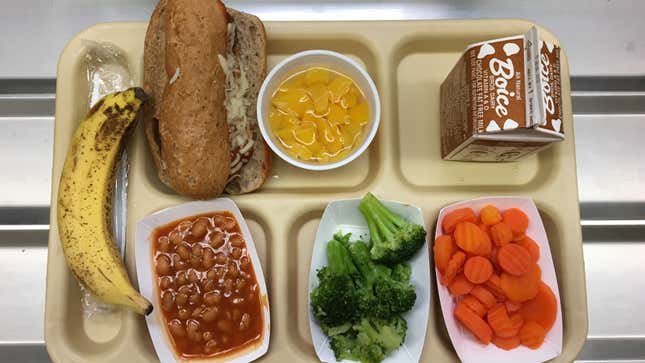Trump's Clampdown on Food Stamps Would Also Affect Kids Getting Free School Lunches
Politics

Half a million kids could lose their automatic qualification for free school lunches, thanks to the Trump administration’s latest attempt to “tighten” food stamp rules (read: strangle much-needed help to, literally, children without enough to eat).
The New York Times reported on this development, which the Trump administration didn’t exactly tout when they first rolled out their proposal to close a “loophole” where states can waive certain food stamp eligibility requirements and allow families with some assets to qualify. States do this because it doesn’t exactly provide a ladder out of poverty if you force people burn through any meager cash cushion before you provide any assistance, but of course the GOP is loudly touting one time a millionaire supposedly managed to finagle his way into benefits.
-

-

-

-

-

-

-

-

-

-

-

-

-

-

-

-

-

-

-

-

-

-

-

-

-

-

-

-

-

-

-

-

-

-

-

-

-

-

-

-








































